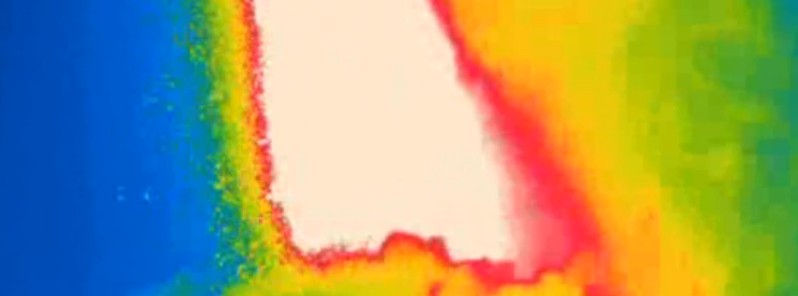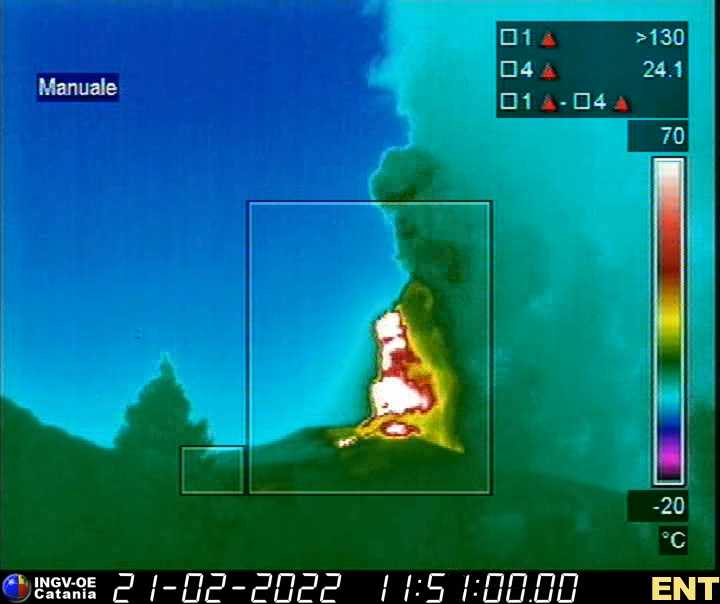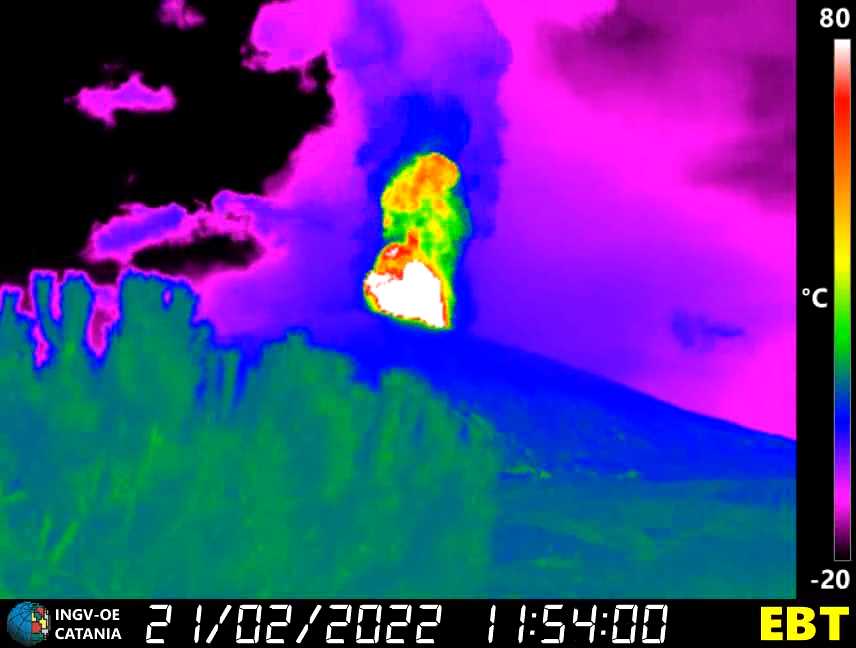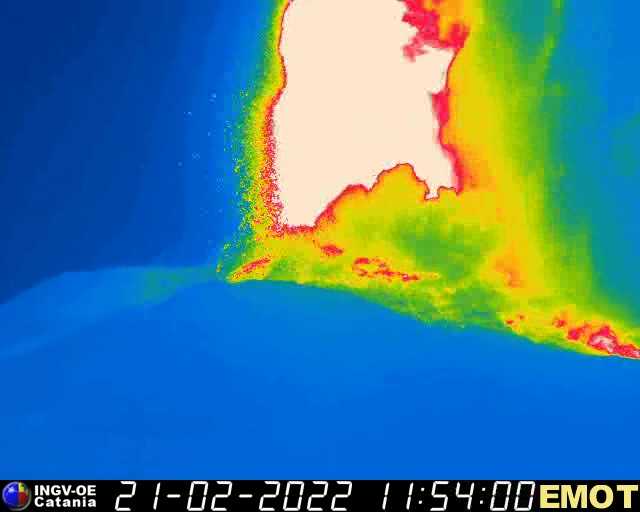Strong eruption at Etna, Aviation Color Code raised to Red, Italy

A new paroxysmal eruptive episode started at Etna volcano, Italy at 11:27 UTC on February 21, 2022. This is the second paroxysm at Etna in 2022.
Strong strombolian activity, with ash cloud moving toward SE started at the volcano at 11:15 UTC today, forcing Etna Volcano Observatory to raise the Aviation Color Code to Red.
The activity further increased at 11:27 UTC with lava fountains and volcanic ash cloud reaching a height of about 10 km (32 800 feet) above sea level and moving SE.1




Strombolian activity at Etna’s Southeast Crater reached full paroxysmal phase — the first of the year — on February 10, 2022, with lava fountains 500 – 600 m (1 600 – 2 000 feet) tall, lava flows to southwest and southeast, and eruptive column up to 10 km (32 800 feet) above sea level. The Aviation Color Code was raised from Yellow to Orange at 04:16 and to Red at 18:59 UTC.2
While Etna is not famous for producing pyroclastic flow, three streams were recorded during that eruption — at 20:40, 21:19 and 21:26 UTC. The first two streams traveled a few hundred meters toward Valle del Bove while the third headed toward the south, also for a few hundred meters.
Geological summary
Mount Etna, towering above Catania, Sicily’s second-largest city, has one of the world’s longest documented records of historical volcanism, dating back to 1500 BCE.
Historical lava flows of basaltic composition cover much of the surface of this massive volcano, whose edifice is the highest and most voluminous in Italy.
The Mongibello stratovolcano, truncated by several small calderas, was constructed during the late Pleistocene and Holocene over an older shield volcano. The most prominent morphological feature of Etna is the Valle del Bove, a 5 x 10 km (5.1 x 6.2 miles) horseshoe-shaped caldera open to the east.
Two styles of eruptive activity typically occur at Etna. Persistent explosive eruptions, sometimes with minor lava emissions, take place from one or more of the three prominent summit craters, the Central Crater, NE Crater, and SE Crater (the latter formed in 1978).
Flank vents, typically with higher effusion rates, are less frequently active and originate from fissures that open progressively downward from near the summit (usually accompanied by strombolian eruptions at the upper end).
Cinder cones are commonly constructed over the vents of lower-flank lava flows. Lava flows extend to the foot of the volcano on all sides and have reached the sea over a broad area on the SE flank.3
References:
1 INGV-OE – VONA – February 21, 2022
2 Powerful eruption at Etna volcano, heavy ash emissions to 10 km (32 800 feet) a.s.l., Italy – The Watchers
3 Etna – Geological summary – GVP
Featured image credit: INGV-OE

Commenting rules and guidelines
We value the thoughts and opinions of our readers and welcome healthy discussions on our website. In order to maintain a respectful and positive community, we ask that all commenters follow these rules.